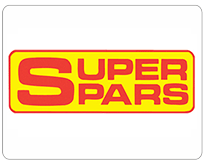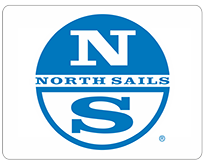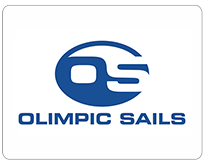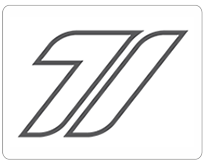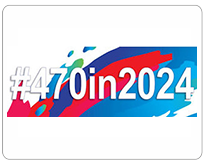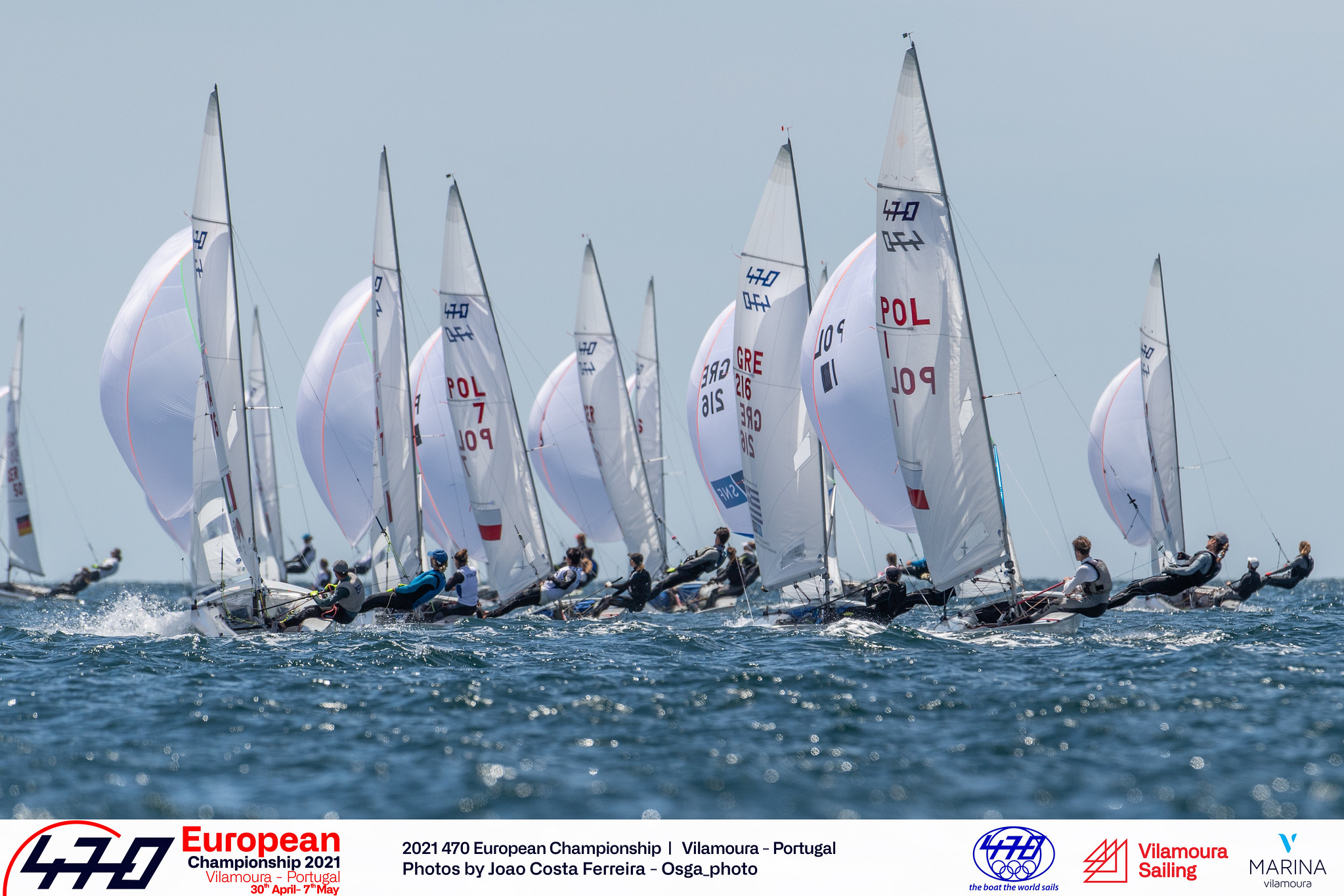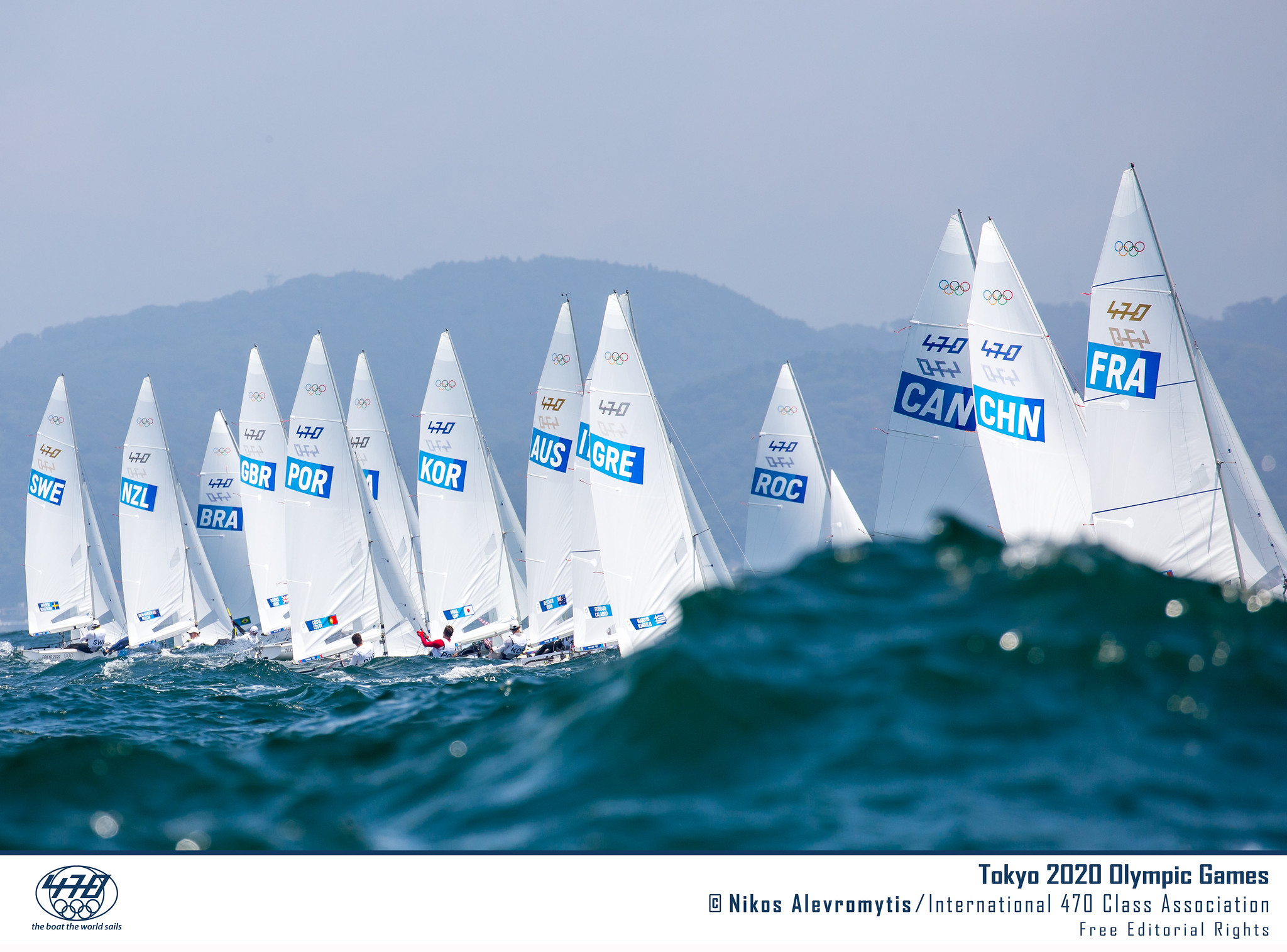10 Mar 2011
470 Sailing and More from Nathan Wilmot (AUS)

Nathan Wilmot and Malcom Page (AUS) won the Gold medal for Australia in 470s at the Beijing Olympics. They sailed 470s together for 10 years under the guidance of coach Victor Kovalenko, winning three World Championship titles, as well as two seconds and a third.
Nathan, coming from an enthusiastic and accomplished sailing family, progressed through the junior classes on Sydney harbour before stepping into his first 470 in 1997. He is married to Shona and they have a baby daughter.
Christine Hansen catches up with Nathan.
 It’s good to see you in New Zealand Nathan. What have you been up to since the 2008 Olympic Games?
It’s good to see you in New Zealand Nathan. What have you been up to since the 2008 Olympic Games?
Nathan: I’ve been pretty much big boat sailing at regattas around the world - in the Melges 32 for two years, we won the Worlds in 2009 and were third last year. It’s been really good fun with a great fleet and sailing against a lot of the guys I used to race 470s against, it’s been really good racing. It’s amazing how many 470 guys are in most of the big boat fleets.
I’ve also been coaching 470’s off and on - the Philippines team and now here in New Zealand coaching the British team, Nick (Rogers) and Twiggy (Chris Grube).
How long have you been sailing keelboats?
Nathan: I’ve been sailing big boats off and on since I was 16 I guess. I started off sailing with Dad doing big boat regattas mainly in America and some Farr 40 sailing in Australia. Obviously the 470 took priority and I put big boats on hold, but once we’d finished the Olympics, I went over and sailed in America with my little brother [Jeremy Wilmot] and he was calling tactics – so he was yelling at me!
You mentioned that there are quite a few 470 sailors in the Melges and other big boat fleets - what is the attraction?
Nathan: It’s a lot of fun and it’s great sailing, but also 470 sailors are sought after for the skills they bring. For example knowing how to tune a boat and make it go fast. Also, the tactical style of 470 sailing is very similar to big boats. You see the 470 legends around the world. Guys like Dave Ullman (USA) in various different fleets. Jordi Califat (ESP) is a pretty sought after person. I’m often racing against Gabrio Zandona (ITA) in different parts of the world sailing Melges and Farr 40s. You definitely see a lot of ex 470 sailors being in the main core of the after guard on a lot of keel boats making them go fast. In New Zealand you’ve got guys like Murray Jones, Peter Evans, Chris Dickson, and Mike Drummond all coming out of 470s.
With your keelboat background, would you like to sail keelboats in the Olympics?
Nathan: I did think about sailing a Star this time around but the biggest things are the cost and logistics, it was just going to be too hard. There’s an incredible keelboat scene to be involved in after the Olympics so if you’re going to race keelboats, that’s the place to do it. There are the TP 52s, RC 44s, Melges circuits, and the Farr 40s. There are new classes popping up all the time and they do draw in all those big names and the competition is great. When you look at the Star most of those guys are racing big boats in one form or another and the Olympic campaign is often just a side project. The Americas Cup and the prestigious big boat regattas are where most of these guys really want to go. On the Olympic side of things, I’ve got where I want to go. Now I want to move on to a new challenge getting more into keelboats.
It’s good to be involved in Olympic sailing in a different scene, coaching, trying to pass on what we learned and develop other teams. Nick got Silver so it’s quite interesting coaching him and Twiggy now. Coaching in the Philippines to develop younger guys and get them up into a good frame is also very satisfying.
How is sailing going in the Philippines as a sport? What boats do they sail?
Nathan: Dad and I have been involved with the Philippine team off and on since around ‘96. Sailing has quite a following over there – a lot of keelboat racing and a healthy dinghy scene developing. There’s a good progression thro ugh dinghies into the keelboat and some guys go on to race big boats throughout Asia. The Philippine Sailing Association are actively trying to get a lot of the young guys into the sport and developing them from Optimists, 420s, Lasers and 470s.
ugh dinghies into the keelboat and some guys go on to race big boats throughout Asia. The Philippine Sailing Association are actively trying to get a lot of the young guys into the sport and developing them from Optimists, 420s, Lasers and 470s.
Are the Philippine sailors being subsidized by their local association or do they provide their own equipment?
Nathan: No, they have a squad that is looked after by the Philippine Sailing Association. They’ have a company that sponsors sailing and they’re trying to fund the kids and help them out as much as they can. They don’t have the money or the resources that other bigger sailing countries have. We managed to get them one of Malcolm and Matt’s 470s, they’ve got five 470s there now.
It’s hard for them to travel to the big regattas but there’s a lot of emphasis on getting to the IOC recognised regional events like the SEA (South East Asian) Games and the Asian Games. They’ve medaled at the SEA Games a  few times and are pushing the Singaporeans along. At the Asian Games they compete with the Japanese, Koreans, and Chinese. It’s quite challenging, but they’re getting better with time and I’m sure they will soon compete quite strongly.
few times and are pushing the Singaporeans along. At the Asian Games they compete with the Japanese, Koreans, and Chinese. It’s quite challenging, but they’re getting better with time and I’m sure they will soon compete quite strongly.
How will it affect sailing in the Philippines if the equipment used internationally is changed?
Nathan: It might not sound like much, but having those five 470s there is a big thing and it took several years to get them. There’s quite a strong bunch of young guys wanting to jump into the 470 so if they change classes there’s nothing those guys could sail. They’re too small to race 49ers and they don’t have the ability or funding to do that. I think that if it did change, they’d be left with the Laser and that would be it. Sailing would drop off quite dramatically because these guys feed into the big boats as well.
Most of them are pretty small guys so the 470 is perfect for them. It’s easy, the cost is low and they can get all the equipment quite easily. Also, they can actually sail the boat from day one – maybe not well – but they can at least get around the track and feel as if they’ve competed in an Olympic class. This is actually very important from the Philippine Sailing Association perspective – having representation in an Olympic class. It’s a pretty big thing for them to get to a championship like the Asian Games and race against top-level sailors from Japan etc. They’re motivated because it’s at least a step towards the Olympics.
What was it like trying to keep down to 470 weight when you were preparing for the last Olympics?
Nathan: When I started sailing the 470 I was still growing and within a year I was 6 inches taller, so 6 foot tall. It wasn’t certain that I’d be able to keep sailing 470s. Dad, being a Flying Dutchman sailor originally, had dreams of me sailing Flying Dutchman – we’ve still got the boat. As it turned out the 470 was the perfect class for me. I did struggle a bit with the weight and tried to be consistent and stay around 65 kilos.
Most of the guys in the class have physiques that are naturally suited to the class. Guys like Nick Rogers (GBR), Andreas Kosmatopoulos (GRE) and Matt Belcher (AUS) are around the 62 ¬¬– 65 kg mark when they’re in peak ph ysical condition. There is no way these guys are ever going to be 75kg and be really fit. Obviously we looked skinny, but at the 2008 Olympics most of the other athletes were the same. The windsurfers,were the same, but also outside of our sport, - cyclists, runners, triathletes, and even some of the sprinting swimmers were all lean, mean machines, exceptionally fit and not carrying any excess weight. It’s the same in the 470. At the pinnacle of our sport we need to be in the same sort of shape as any top athlete.
ysical condition. There is no way these guys are ever going to be 75kg and be really fit. Obviously we looked skinny, but at the 2008 Olympics most of the other athletes were the same. The windsurfers,were the same, but also outside of our sport, - cyclists, runners, triathletes, and even some of the sprinting swimmers were all lean, mean machines, exceptionally fit and not carrying any excess weight. It’s the same in the 470. At the pinnacle of our sport we need to be in the same sort of shape as any top athlete.
Many of the top level sailors stay in the 470 class for a long time, why do you think that is?
Nathan: I guess you look at people like Paul Foerster and Kevin Burnham (USA) who won an Olympic Gold  at 40 and 47 years old. They had both already won silver medals. Paul is one of the most determined and accurate sailors I’ve ever sailed against, and Kevin’s temperament and experience created the perfect dynamics on the boat. They got to that age and showed you could still do it – you could be physically fit enough to do it. But it’s tough - you get up against the young guys and watch how physical they can be on the boat.
at 40 and 47 years old. They had both already won silver medals. Paul is one of the most determined and accurate sailors I’ve ever sailed against, and Kevin’s temperament and experience created the perfect dynamics on the boat. They got to that age and showed you could still do it – you could be physically fit enough to do it. But it’s tough - you get up against the young guys and watch how physical they can be on the boat.
Guys like Nick Rogers doing it again – he’s won two silvers and he’s fighting to win that gold. You’ve got Malcolm Page still sailing. He’s got the gold but loves what he’s doing and loves the boat so he’s going to keep going. I think you have to love the boat and the racing to stay in it as long as some of us have.
Young New Zealand crews talk about how much they learn when competing at the 470 World Champs against such experienced opposition.
Nathan: You do see it quite a bit – the younger guys coming in and making an impact. Pete (Burling) and Carl (Evans) from New Zealand and the young Croatian guys Sime Fantela and Igor Marenic. It still takes them a couple of years to learn the boat well enough to win at the highest level but once they reach the top part of the fleet, they quickly became stronger and stronger. Both these crews made it to the Beijing Olympics as young sailors and now the Croatians have gone on to win a World Championship in the class.
stronger and stronger. Both these crews made it to the Beijing Olympics as young sailors and now the Croatians have gone on to win a World Championship in the class.
One of the great strengths of the class is that the young guys can jump in and learn from the experience of the older guys really quickly and they make that jump up the fleet. It brings in the new generation so quickly that the class is always going to be really competitive.
How did you find the atmosphere of the 470 Class?
Nathan: It’s probably one of the main things I miss about 470s, the atmosphere at the Worlds where you’ve got so many boats and so many friends all together is fantastic. The social side is great and having the Men’s and Women’s fleets together is a bonus. Being able to hang out with you r mates off the water – but then once you get on the water you’re everyone’s enemy. You can still go and have a beer after the racing, that is one of the big things I miss about it – the camaraderie with all the competitors, it’s like a big family of sailors. You see new teams coming through and you help them out a bit. And I’ve been to some pretty cool places to race in 470 Worlds.
r mates off the water – but then once you get on the water you’re everyone’s enemy. You can still go and have a beer after the racing, that is one of the big things I miss about it – the camaraderie with all the competitors, it’s like a big family of sailors. You see new teams coming through and you help them out a bit. And I’ve been to some pretty cool places to race in 470 Worlds.
We hear comments that the 470 is not an exciting boat to sail – what is your experience?
Nathan: Obviously, to make those comments you’ve never sailed a 470 in a decent breeze or raced it at top level. You often see at the big regattas that when it’s really windy, the 470 are the only class that’s pushing to go out to race. The racing is still the best racing I’ve ever done, it’s so close and in 25 knots you’re blasting around and there’s four or five boats still fighting for a win. There aren’t many classes where you can do that and it makes it so enjoyable. I think that’s why so many people do stick around this class for so long, because you do get those really close regattas and close racing. It’s quite scary at times.
What about downwind?
Nathan: Having the symmetric spinnaker with a pole means a wide range of options present themselves. You sail reaching angles downwind in certain conditions, sail square in others and it’s knowing the right time to do all that stuff. The wave conditions play a big part in it. Races are often won and lost on these decisions and techniques. You could jump into any class after that and you’d be in a pretty good position. I’ve sailed 18s and 16 foot skiffs and it’s all an extension of 470 sailing. But the racing is not as close in anything but the 470
There are a lot of controls on a 470, do you think they enhance or detract from the battle on the water?
Nathan: I think it makes it more of a challenge and definitely enhances the racing. You need to understand how the rig works and how the sails set up and then adapt your sailing technique to get the most out of it – like when to be vanging and when not to be, when to drop the rig back or when to rake the centerboard – the fine-tune makes a differen ce all the way around the race course. The challenge is knowing the timing of that and being able to race at the same time - this is where that next step to be with the top guys is made. Sometimes a boat is all of a sudden going a lot quicker so you obviously need to make a tuning or technique adjustment and then you’re as fast as each other again. At the same time also being able to compete tactically. It’s such a strong class with so many great sailors in it that tactically it’s just one of the toughest things, if you miss a shift, you just watch all these guys go past.
ce all the way around the race course. The challenge is knowing the timing of that and being able to race at the same time - this is where that next step to be with the top guys is made. Sometimes a boat is all of a sudden going a lot quicker so you obviously need to make a tuning or technique adjustment and then you’re as fast as each other again. At the same time also being able to compete tactically. It’s such a strong class with so many great sailors in it that tactically it’s just one of the toughest things, if you miss a shift, you just watch all these guys go past.
Does the level of skill, expertise and equipment, needed to make the 470 go fast put it out of reach for countries developing their sailing talent?
 Nathan: No, the opposite is true. It’s a class where there are three or four builders, a couple of popular mast manufacturers and sail makers so the majority of the fleet have the same equipment, or at least very similar. For a country like the Philippines, we can buy the exact equipment used by any of the top crews in the world. It makes it very easy for countries like this to jump in knowing that it’s not a question of equipment, it’s a matter of learning how to use it. All the information is on the websites.
Nathan: No, the opposite is true. It’s a class where there are three or four builders, a couple of popular mast manufacturers and sail makers so the majority of the fleet have the same equipment, or at least very similar. For a country like the Philippines, we can buy the exact equipment used by any of the top crews in the world. It makes it very easy for countries like this to jump in knowing that it’s not a question of equipment, it’s a matter of learning how to use it. All the information is on the websites.
The quantum leaps of development in the class have long since passed. The 470 is a class where development has kind of plateaued. The class is at the peak of its development within a very tight set of rules, so these days you never see anyone coming out with something that’s going to be significantly faster than what everyone else is using.
What is your view on the push to make Olympic sailing more media friendly, to change the style of racing and incorporate classes to accommodate this?
Nathan: I think the challenge actually lies with the media. There is so much more that could be done to bring sailing into the living room. It’s a matter of the camera angles and production techniques and sports presentation. For example, the 470 can be as interesting as any boat if it’s done properly. The closeness of the 470 racing makes it easier to create interest. If you watch, it’s always really close. There’s always a good group of boats that could win at any time and I th ink it’s quite an attractive style to watch.
ink it’s quite an attractive style to watch.
Olympic sailing isn’t about who has the biggest capsize. It’s about racing and about how tight the competition is. In China the 470 race for the silver medal was so close as they came down to the finishing line,- the British tried to pump past one last wave to get that silver medal which was great to watch.
By Christine Hansen
Top Image: Nathan Wilmot and Malcolm Page training off Sydney Heads © Victor Kovalenko. Other images by David Bell, Paul Gilham/Getty Images, Clive Mason/Getty Images, Victor Kovalenko.






